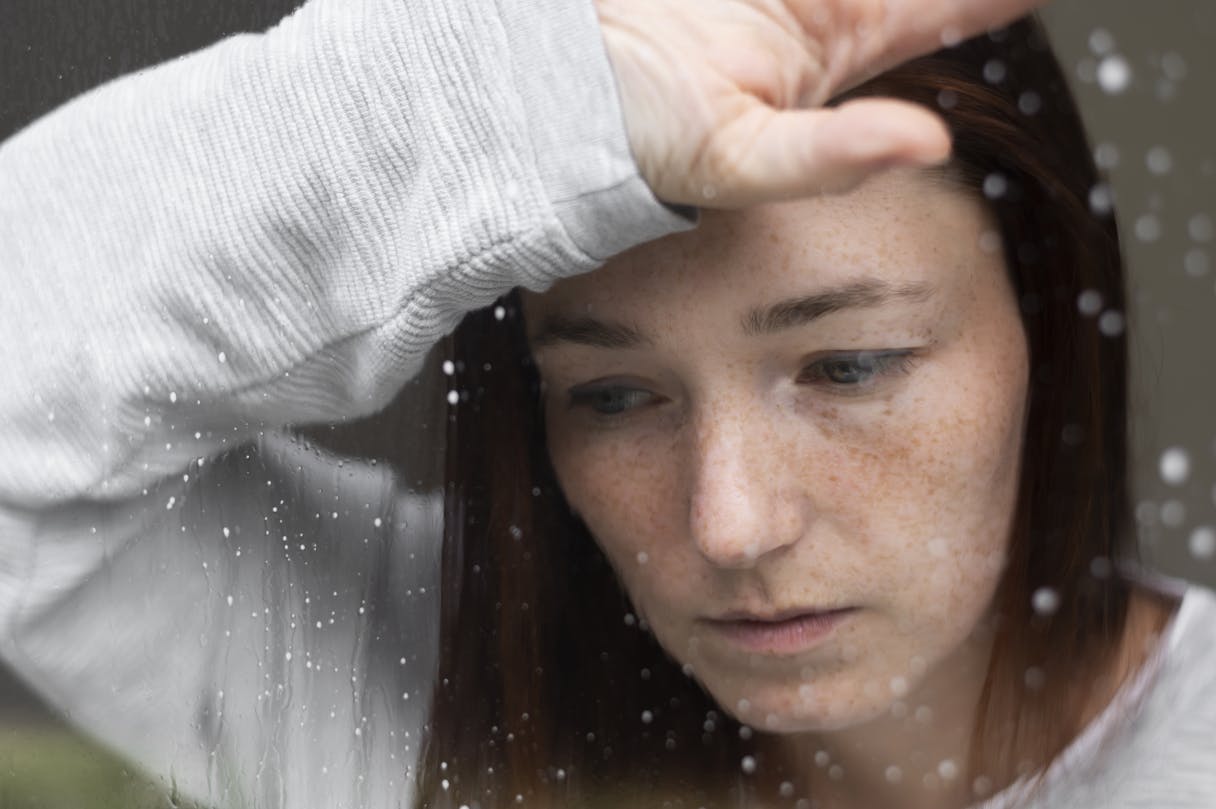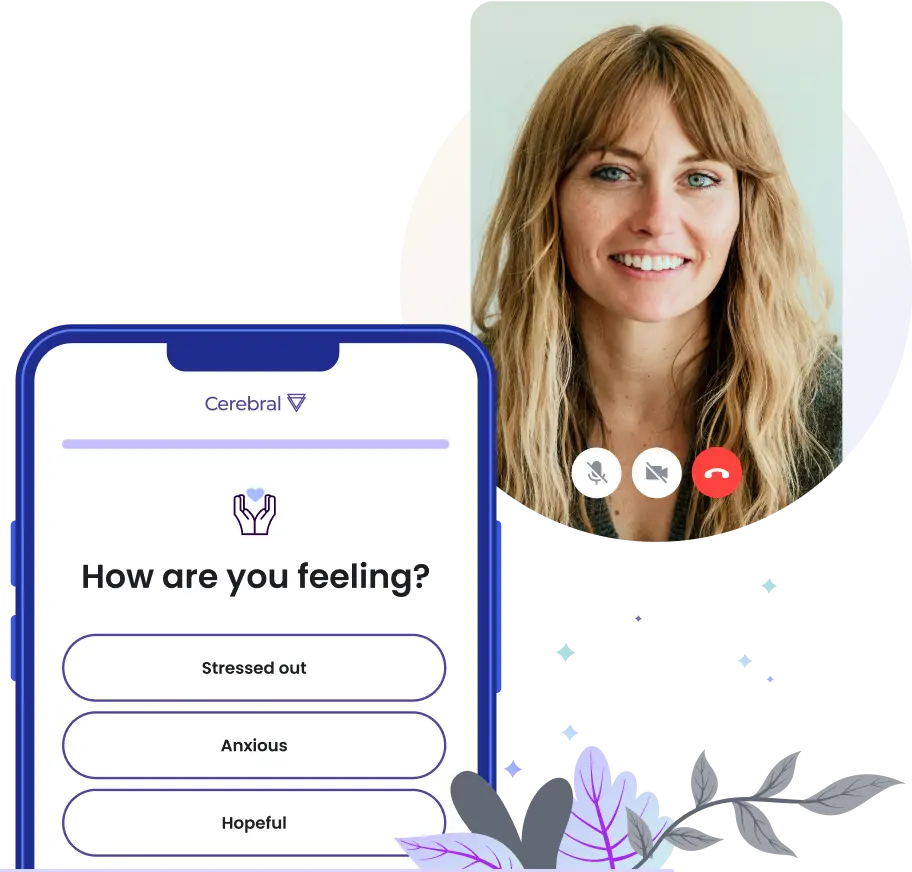Is It Sadness or Depression? How to Tell the Difference

Feeling down is something most of us experience at some point in life. It could be due to a specific trigger, like a break-up or the loss of a job, and typically, these feelings of sadness pass.
However, when low moods linger, disrupting daily life and causing an overwhelming sense of hopelessness, it may be a sign of something more clinically significant. Many people may wonder, “Is this just sadness, or am I depressed?”
Sadness and depression may share some similarities, but recognizing the difference between the two is an important step in seeking the right kind of help.
In this guide, we'll explore the characteristics of sadness and types of depression, the signs that someone may be experiencing a depressive disorder, outline when help may be needed, and go over some common treatment options. Of course, individual diagnosis and treatment can only be rendered by a licensed professional.
Recognizing sadness
Sadness is a natural emotional response to difficult circumstances or losses in life, such as the end of a relationship, a disappointing event, or setbacks at work or school. It's characterized by feelings of unhappiness, sorrow, or disappointment.
Characteristics
This emotional response is a part of the human experience; it’s a necessary feeling for processing and coping. When you’re sad, you may feel:
- Downhearted or in a low mood
- Tearful or weepy
- Oversensitive to the issue at hand
Sadness can sometimes be a positive emotion, leading you to reflect on life and gain resilience from the challenges you face. It also tends to have an endpoint — over time, with self-care and support, people typically recover from sad experiences and return to their previous emotional state.
Triggers and duration
Sadness is often associated with a specific trigger, including personal experiences, external events, or internal thoughts and feelings.
While everyone feels down occasionally, the initial intensity of the feeling could be alarming in some cases. However, the duration of sadness is usually temporary, lasting days to weeks, and gradually subsides as circumstances improve.
Identifying clinical depression
Depression, clinically referred to as major depressive disorder (MDD) or clinical depression, is a mental health condition that affects millions of people.
What is depression?
It's characterized by a persistent feeling of sadness, loss, or emptiness that can extend for weeks, months, or even years. It affects how you think, feel, and behave, and it can interfere with daily functioning and significantly impact your quality of life.
Unlike sadness, depression doesn't necessarily have a clear outside trigger, and its effects are more pervasive.
Symptoms and signs of depression
Depression comes with an array of symptoms that could touch every aspect of your life, including:
- A consistently depressed mood
- Loss of interest or pleasure in activities once enjoyed
- Significant weight loss or gain due to a change in appetite
- Insomnia or hypersomnia
- Fatigue or loss of energy
- Feelings of worthlessness or excessive guilt
- Difficulty thinking, concentrating, or making decisions
- Recurrent thoughts of suicide or death, or a suicide attempt
These symptoms shouldn’t be ignored and may be a sign that help is needed.
Clinical diagnosis criteria
The Diagnostic and Statistical Manual of Mental Disorders (DSM-5), used by mental health professionals, outlines specific criteria for making a clinical diagnosis of a depressive disorder.
Symptoms that persist for at least two weeks and significantly impair functioning in multiple areas of life, such as work, school, or relationships, could be indicative of major depressive disorder (MDD).

Feeling depressed vs. having MDD
There’s also a gray area between sadness and clinical depression. You might be thinking, ‘But I wouldn’t call this sadness, and it also doesn’t sound like it’s MDD, so am I depressed?’
You could be experiencing situational depression, which is an adjustment disorder with a depressed mood triggered by specific life events, such as the loss of a job, the end of a relationship, financial struggles, or a major life transition. Situational depression shares similarities with clinical depression, such as feelings of sadness, listlessness, hopelessness, and loss of interest in activities, but it differs in its duration and context.
Unlike major depressive disorder, situational depression is temporary and typically resolves once the situation improves or you adapt to the changes. While feeling depressed can be concerning, it's important to recognize that it can be a natural reaction to difficult circumstances and may not necessarily indicate the presence of a long-term mental health condition.
However, you may benefit from speaking with a licensed therapist to help implement coping strategies so you can recover faster. Though generally not as severe as clinical depression, symptoms of situational depression can also require professional support, as thoughts of suicide may be experienced in some cases.
Pay attention to how long symptoms persist or if they significantly impair daily functioning so you can explore further treatment options and support.
How do I know if I am depressed?
Distinguishing between sadness and a depressive disorder involves considering the duration, intensity, and impact of your symptoms on daily life.
Depression vs. sadness: Duration and intensity differences
When wondering if you’re just feeling sad or if you may have a depressive disorder, it's important to consider the intensity and duration of your feelings.
Sadness is typically temporary and tied to specific events. While feelings of sadness could initially feel extreme, those emotions generally ease over time, and you can re-engage in life as you typically would.
Symptoms of depression are persistent and may not have an identifiable cause. The intensity of depressive symptoms is often greater and may fluctuate throughout the day.
Depression vs. sadness: A different impact on daily life
Sadness may affect your mood temporarily, but a depressive disorder can have a considerable and continuous impact on your daily life.
During short-lived periods when you’re feeling sad or depressed, you may be less motivated, social, focused, and/or energetic. However, when the feeling subsides, you’re able to resume daily life as usual.
On the other hand, conditions like major depressive disorder can affect your ability to work, study, eat, sleep, and enjoy life. Clinical depression can also undermine your ability to maintain close relationships and can interfere with day-to-day functioning.

When to seek help
Monitoring your symptoms and knowing when to seek professional help is a big part of managing clinical depression.
Monitoring depression symptoms
If you're experiencing symptoms of depression, monitor how they're affecting your life. Keep track of your mood, thoughts, and behaviors over time. Take note of how long they last and if they prevent you from doing typical activities.
Free mental health resource: Logging Depression worksheet
Self-help strategies and when to use them
There are beneficial things you can do to help relieve mild symptoms of depression, including:
- Exercising regularly
- Practicing relaxation techniques
- Maintaining a healthy diet
- Getting regular sleep
- Avoiding alcohol and drugs
- Talking about your mental health with a supportive friend or loved one
- Journaling for mental wellness
While these strategies can complement professional treatment, they may not be sufficient for the severe or persistent symptoms that can be experienced by those with clinical depression.
The bottom line: Doing these things can enhance your mental well-being, but they’re not a cure for depression.
When to get professional help
If depression symptoms continue for more than two weeks and significantly impair daily functioning, reach out to a mental health professional for help. They can evaluate you for a diagnosis and create a tailored treatment plan, including therapy and/or antidepressants or other medications, to help you cope and improve your quality of life.
Seek help immediately if you're thinking about acting on suicidal thoughts, in a crisis, or experiencing extreme emotional distress.
- Call or text 988 for the National Suicide Prevention Hotline.
- Call 911 if you’re having a mental health emergency.
- Text HOME to 741-741 if you're emotionally distressed and need immediate support.
For those who aren’t dealing with depression, talking with someone could help when you’re simply just feeling down. Therapy can help with every day challenges just as much as it helps with mental health conditions.
Treatment for depressive disorders
Various treatment options are available, including therapy, medication, and a combination of the two.
Therapy and counseling
Cognitive behavioral therapy (CBT), interpersonal therapy, and other forms of psychotherapy can help individuals address underlying issues contributing to depressive disorders and develop coping strategies for managing symptoms.
Free mental wellness resource: CBT Thought Record worksheet
Medication
Antidepressant medications, such as selective serotonin reuptake inhibitors (SSRIs) or serotonin-norepinephrine reuptake inhibitors (SNRIs), may be prescribed to help alleviate symptoms of depression.
For those with MDD or a similar condition, these medications can help rebalance the chemicals in the brain that affect mood. Work with a licensed prescriber to determine what’s most appropriate for you.

Becoming informed and considering support
Understanding the difference between sadness, situational depression, and depressive disorders is key to addressing your circumstances. By recognizing the signs and symptoms of any of these experiences, you can proactively seek support or engage in self-help strategies, allowing you to regain control of your life and find hope.
Whether you’re struggling with feelings of sadness, could use help recovering from situational depression, or need support in managing MDD, you deserve to feel better and help for all of these situations is available.
Cerebral offers convenient online mental health services, including virtual therapy sessions, medication management via telehealth, and ongoing support. We’re committed to helping you find the best care team for you, taking your circumstances, needs, and preferences all into account.
With a network of qualified licensed prescribers, you could also manage medication for MDD, if clinically appropriate, from a central hub under one affordable subscription with free expedited shipping.
Want to give Cerebral a try? Schedule your first session today.
Images by freepik, Drazen Zigic, freepik, and freepik on Freepik.
The information in this blog is provided as a general educational resource only, and is not to be used or relied on for any diagnostic or treatment purpose. This information should not be used as a substitute for professional diagnosis and treatment and does not create any patient-physician relationship between you and Cerebral. Please consult your health care provider before making any health care decisions or to get guidance about a specific medical condition.

The Benefits of Walking to Help Depression

Retirement and Depression: Why It Happens and How to Cope

Understanding the Different Types of Depression

Call 911 if you’re having a
mental health emergency
Text Home to 741-741 if you're in emotional
distress and need immediate support
Call or text 988 Suicide &
Crisis Lifeline. Chat service
is available at 988lifeline.org.